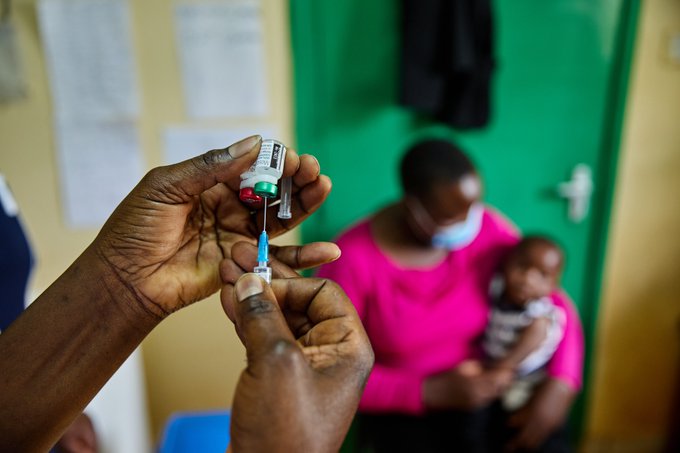As the world marks the 2025 World Neglected Tropical Diseases (NTDs) Day, Nigeria finds itself grappling with a dire public health issue, as over 122 million Nigerians are currently at risk of one form of a tropical disease or another. This startling revelation underscores the urgency for both local and global intervention as the nation strives to meet ambitious health targets.
Dr. Iziaq Salako, the Minister of State for Health, addressed the growing concern in Abuja, revealing the staggering statistics while briefing the press on the upcoming World NTDs Day. “Nigeria is home to approximately 25% of Africa’s burden of neglected tropical diseases, with a cumulative total of over 122 million people vulnerable,” Dr. Salako said. “These diseases, which are both communicable and non-communicable, predominantly affect children and women, and are intricately tied to issues of poverty, inadequate sanitation, poor housing conditions, and unsafe water.”
The Federal Government has pledged to eliminate the scourge of NTDs by the year 2030, in line with the World Health Organisation’s (WHO) NTD Roadmap 2030. To reach this goal, Nigeria requires at least $18.7 million over the next five years to combat a range of conditions, including blinding trachoma, lymphatic filariasis, and onchocerciasis (river blindness), among others.
The enormity of the task is clear: five years of intensive action are required to ensure that 22 states endemic for onchocerciasis are free from the disease, and that 62% of the population at risk of morbidity from lymphatic filariasis receive appropriate management.
A Global Crisis with Local Consequences
Globally, NTDs affect over 1 billion people, representing a troubling 12.5% of the world’s population. Of these, African nations bear the brunt, accounting for about half of the global burden. Dr. Salako highlighted that Nigeria alone makes up a quarter of the continent’s cases, a stark reminder of the nation’s disproportionate share in this global health crisis.
While the scope of the problem is staggering, Dr. Salako noted that Nigeria has made some progress over the past several years. “We have successfully eradicated guinea worm since 2013, and have reduced the prevalence of trachoma infections in the at-risk population by 84%,” he added. Furthermore, Nigeria has made strides in reducing the need for treatment in regions affected by lymphatic filariasis, with 39.5 million people in 20 states and the Federal Capital Territory no longer requiring medication.
Dr. Salako’s statements also referenced the ongoing successes in the fight against onchocerciasis, with transmission halted in several states, including Plateau and Nasarawa. However, despite these advances, Nigeria remains far from meeting its targets for NTD elimination.
The Urgent Need for Effective Intervention
The WHO’s 10-year roadmap (2021–2030) sets forth ambitious objectives, focusing on integrated, multi-sectoral approaches to fighting NTDs. Dr. Salako stressed the importance of these efforts, stating that they require the commitment and cooperation of various sectors to be effective. “To achieve sustainable results, we must go beyond the health sector. Tackling NTDs requires collaboration across education, sanitation, housing, and water management,” he said.
Despite these positive reports, challenges remain. Peter Terver, President of IDEA-Nigeria, a group representing individuals affected by NTDs, voiced his concerns about the inadequate supply of Multi-Drug Therapy (MDT) for leprosy. According to Terver, over 3,000 diagnosed individuals, including 800 children, have gone without treatment for more than a year due to supply shortages caused by regulatory barriers. He called for urgent intervention from the government to remove these obstacles and ensure an uninterrupted supply of life-saving medications.
“People are suffering,” Terver said, “and these regulatory delays are prolonging their pain and causing irreversible disabilities. It is imperative that the Federal Government addresses these issues immediately.”
Call to Action: Global and Local Commitment
Abdulazeez Musa, Country Director of CBM Global Nigeria, echoed Terver’s sentiments, calling this year’s World NTDs Day theme—“Act Now. Act Together, Invest in NTDs”—a critical rallying cry for immediate action. He emphasized that delayed responses to NTDs only result in avoidable deaths and prolonged suffering.
“Time is of the essence,” Musa said. “Every day we delay, lives are lost, livelihoods are destroyed, and the suffering continues. It’s time to act, and act together.”
This call to action has never been more urgent as Nigeria continues to face the brunt of the NTD burden. The federal government, in collaboration with the WHO, has laid out an ambitious roadmap for the next decade, but the support of local communities, international stakeholders, and political leaders is essential to achieving the elimination targets.
A Critical Juncture
With the specter of tropical diseases threatening the health and well-being of millions, Nigeria stands at a crossroads. While there has been significant progress in the fight against NTDs, such as the eradication of guinea worm and successful mass treatment campaigns for lymphatic filariasis and trachoma, the road ahead is still fraught with challenges. Nigeria’s commitment to eliminating NTDs by 2030 remains steadfast, but the government must address logistical issues, regulatory barriers, and funding gaps if it is to meet these ambitious goals.

